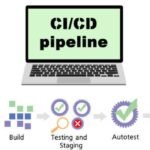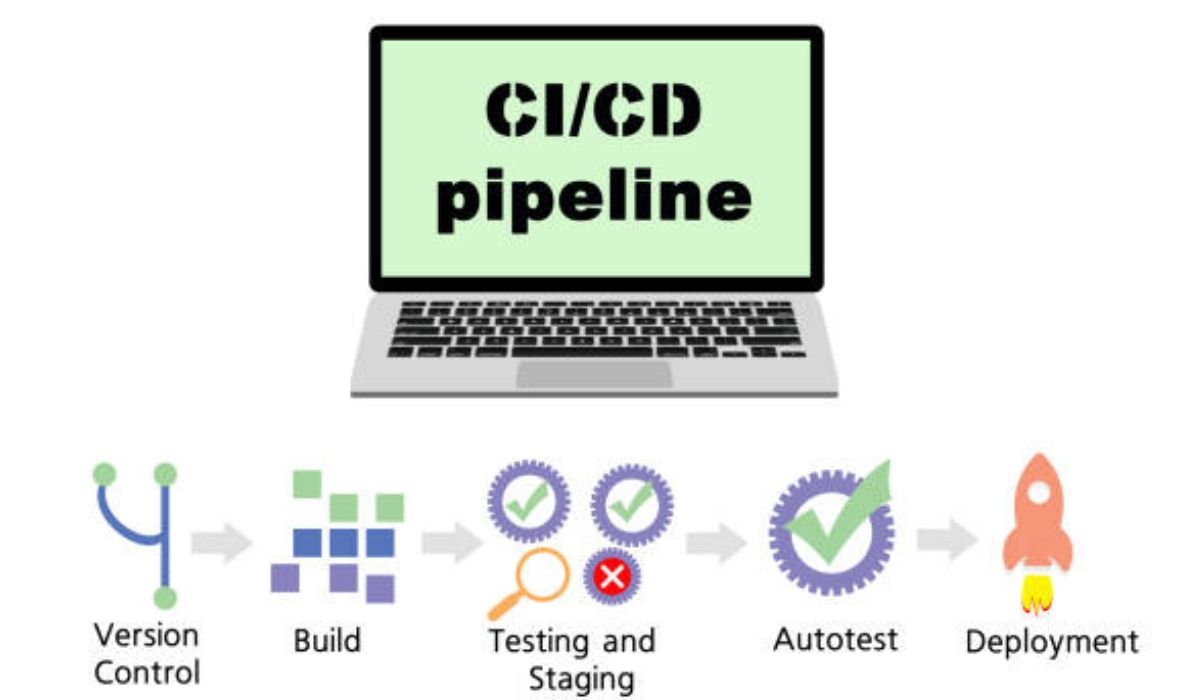As digital operations become faster, smarter, and more resilient than before, Artificial Intelligence (AI) has emerged as the new engine for enterprise efficiency. From predictive analytics to intelligent process automation, organizations are rethinking how they carry out everyday workflows, user interactions, and software delivery life cycles. The increased number of AI automation tools means there is more opportunity for organizations to scale, optimize, and self-heal than ever before.
In this blog, we will explore some of the most exciting and developed platforms available for AI automation, which are changing productivity for technology and enterprise ecosystems. We will take a deeper look at top players and what makes them imperative today in high-performing workflows.
LambdaTest
LambdaTest has grown far beyond its origins as a cloud-based testing platform to become an AI-powered quality assurance solution that transforms how developers approach testing. Unlike traditional automation tools, LambdaTest combines intelligent test orchestration, predictive analytics, and machine learning-driven insights, enabling teams to achieve faster, smarter, and more reliable testing outcomes.
With LambdaTest Smart Test Execution, AI identifies flaky tests, optimizes test sequencing, and accelerates test runs across a wide range of environments. Its compatibility with thousands of devices, browsers, and OS combinations makes it a standout solution for cross-browser and cross-platform testing, allowing teams to validate complex workflows efficiently.
One of LambdaTest’s most valuable capabilities is its AI-driven analysis of testing gaps. Pinpointing areas with insufficient coverage helps teams focus resources where they matter most. Integrated seamlessly with CI/CD pipelines, LambdaTest supports parallel test execution and continuous feedback loops, establishing it as one of the most effective tools for modern automation testing.
Key Features:
- AI-powered flakiness detection and test case prioritization
- Predictive execution pipelines informed by historical trends
- Smart visual regression testing with machine learning anomaly detection
- Integration with tools like Jenkins, Jira, Slack, and GitHub
- Support for Selenium, Cypress, Playwright, and real device testing
Whether scaling automation initiatives or executing thousands of tests daily, LambdaTest leverages AI to reduce inefficiencies, accelerate testing cycles, and provide continuous, actionable insights in real time, empowering teams to deliver higher quality software at the pace of innovation.
UiPath: The Intelligent Heart of Enterprise Automation
UiPath has positioned itself as a leading global player for Robotic Process Automation (RPA), and its full transition into an AI automation platform solidifies its place as a key player in digital transformation. The key way UiPath excels is by fundamentally changing the nature of RPA by adding Machine Learning models, Natural Language Processing (NLP), and cognitive automation to traditional RPA capabilities.
The AI Center acts as a hub for organizations to control the development, implementation, and integration of ML models into workflows, allowing organizations to train, deploy, and fine-tune AI models without the complexity of coding.
UiPath’s Document Understanding, for example, enables users to apply advanced AI capabilities, such as OCR, NLP, and AI, integrated into one solution that extracts structured data from unstructured documents—dramatically cutting down human involvement in manual tasks.
Key Features:
- AI Center for managing model lifecycles
- Process Mining to identify candidates for automation
- Task Mining to analyze user behavior based on time-series data at the user task level via ML
- Connectivity for deep-level integration into ERP, CRM, and legacy systems
- Human-in-the-loop workflows enabled via natural language bots
For large organizations where workflows are complex, repetitive, and span a massive number of human processing workflows, UiPath’s intelligent reach presents true end-to-end automation.
IBM Watsonx: AI with Industrial Strength
The Watsonx platform from IBM is designed to help users responsibly build, scale, and govern AI models. It is now a major player in enterprise AI that covers everything from conversational AI to intelligent document processing and decision automation.
Watsonx combines a data lake with a studio for training and tuning AI models, as well as a governance layer to provide transparency and trust with AI use.
As an example, Watsonx.ai offers the ability to tune down foundation models to particular fields like finance, healthcare, legal, and so forth, making its use ideal in such a regulated setting.
Key features:
- Large language models (LLMs)
- Explainability, bias detection and auditing tools
- Modules of natural language processing, speech recognition and visual recognition
- On-premises and Hybrid cloud infrastructure integration
- Watson Orchestrate for task-based AI automation
Watsonx is not just about deploying AI; it is about deploying AI ethically, securely and at enterprise scale. For organizations requiring both compliance and performance, Watsonx delivers on both.
ALSO READ THIS: Analyzing Document AI: How Different Tools Compare in Features and Scalability
Microsoft Power Automate: Employers AI Automation for All Users
Previously known as Flow, Microsoft Power Automate puts AI automation in the hands of the business user. Power Automate works beautifully in a low-code or no-code environment. It has deep integration with everything Microsoft, including all of Office 365, Azure, Teams, SharePoint, and Dynamics—it’s a perfect automation tool for teams that have no tech background and want to automate manual tasks.
Power Automate has an AI Builder that allows users to create intelligence, such as form processing, object detection or sentiment analysis, into automated flows easily without coding. When combined with Microsoft Copilot, users now have the ability to automate by simply typing in what they would like to automate.
Key Features:
- Workflow creation and design that include hundreds of prebuilt connectors for drag-and-drop ease
- AI Builder, which enables Machine Learning based Form Processing and data classification
- Desktop automation (RPA) that contains attended and unattended bots
- Simplifying connections to Office 365, Azure, and Power BI
- Integrated Chatbot with Power Virtual Agents
Power Automate empowers everyone to automate workflows, extract insights, and reduce manual effort—all with a user-friendly AI layer.
Automation Anywhere: Cognitive Automation for the Real World
As one of the original RPA platforms, Automation Anywhere continues to lead the pack when it comes to integrating AI into automation. Thanks to its platform, users can automate not only structured processes but also unstructured processes at scale using AI.
One of the standout pieces is the IQ Bot that relies on AI to understand and process unstructured data (i.e. email, invoices, contracts and similar documents). With Automation Anywhere’s AARI (Automation Anywhere Robotic Interface), users may integrate automation bots with SAP or Salesforce with little IT complexity.
Key Features:
- IQ Bot for intelligent document processing
- Discovery Bot, which can Identify automation opportunities with AI
- Bot Insight for Analytics and ROI visibility in real time
- Cloud-native architecture with immediate scale potential
- Capability to combine with natural language processing (NLP), vision AI, and third-party APIs
Automation Anywhere does not only enable teams to create bots, but it also enables teams to see where they can make the most substantial difference in the business.
WorkFusion: AI-First Automation for Banking and Finance
WorkFusion is designed for regulated industries, especially banking, insurance and financial services. It integrates AI, analytics, and RPA to automate sensitive, judgment-based tasks while safeguarding the judgment of the employee.
Its pre-trained bots are built to manage compliance operations such as sanctions screening, user onboarding, and KYC (Know Your Customer) compliance. These are domain-specific bots, meaning that the automation saves time, and automation retains the regulatory integrity of the process.
Key Features:
- Pre-trained bots for AML or KYC
- Intelligent document classification, including anomaly detection
- AI-powered decision-making with human involvement
- Audit trail with explainability layers
- Connecting modern CRMs with traditional financial systems
WorkFusion represents how AI is capable of simplifying not only tasks but also decisions in a speedy and accountable way.
Replit Ghostwriter: AI-Powered Coding Right from Your Browser
Replit Ghostwriter is a revolutionary AI automation assistant, integrated directly into the Replit Integrated Development Environment (IDE), that aims to speed up the software development process by generating or refactoring code. While on the surface it might appear to be a software developer productivity tool, the true value comes from how it automates analyzing, coding, or debugging a task to help make software more readable and quicker.
Ghostwriter employs advanced language models to predict what code should be written, automatically complete function calls, and then, incredibly, describe what a code snippet does in natural language. Ghostwriter is an empowering AI tool to support teams operating in the environment of agile development that might not get access to an entire team of engineers.
It has automated testing recommendations, bug descriptions, and integrated Git, and teams will not have to think about syntaxes when dealing with the logic.
Key Features:
- Assisted code generation over multiple programming languages
- Transforming natural language to code
- Debug help and code documentation
- Collaboration features with your teammates in real-time
- Inbuilt container, versioning, and hosting support
While it cannot be categorized as a test automation tool per se, it certainly includes automation earlier in the development cycle to deliver on its mandate, improving code quality and lowering delivery times.
Final Thoughts: A Better Way to Work
AI-driven test automation is not just a trend; it has now become the norm. We’ve seen the growth of AI automation across AI-enabled platforms, like LambdaTest, UiPath, and IBM Watsonx, which have enhanced productivity, intelligence, and new ways to innovate.
Whether you are testing software, processing documents, managing user interactions, or optimizing processes in the back end, an AI platform exists that is specifically designed for your industry and use case, and that is the future of automation.
The future of efficiency is not in automating things—the future is to learn from the things we automate, adapt to the things we’re automating in real-time, and create systems that evolve, automate, and improve over time. These platforms are not only tools; they represent the shift of mindset into self-optimizing and automated operations.
So, as organizations make investments in the next phase of their digital transformation, the selection of an AI automation platform will be probably the most strategic decision they make.
YOU MAY ALSO LIKE: Intelligent Process Automation for a Smarter CI/CD Pipeline











